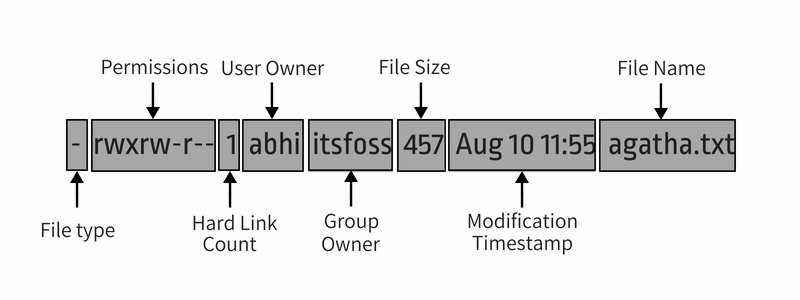5.8 KiB
Linux
Absolute Path vs Relative Path in Linux/Unix
One of this blog follower asked us that whatâs the difference between absolute and relative path?
To understand this we have to know what is a path in Linux.
What is a path?
A path is a unique location to a file or a folder in a file system of an OS. A path to a file is a combination of / and alpha-numeric characters. What is an absolute path?
An absolute path is defined as the specifying the location of a file or directory from the root directory(/). In other words we can say absolute path is a complete path from start of actual filesystem from / directory.
Some examples of absolute path:
/var/ftp/pub
/etc/samba.smb.conf
/boot/grub/grub.conf
If you see all these paths started from / directory which is a root directory for every Linux/Unix machines.
What is the relative path?
Relative path is defined as path related to the present working directory(pwd). Suppose I am located in /var/log and I want to change directory to /var/log/kernel. I can use relative path concept to change directory to kernel
changing directory to /var/log/kernel by using relative path concept.
$ pwd/var/logcd kernel
Note: If you observe there is no / before kernel which indicates itâs a relative directory to present working directory.
Changing directory to /var/log/kernel using absolute path concept.
$ cd /var/log/kernel
Note: We can use an absolute path from any location where as if you want to use relative path we should be present in a directory where we are going to specify relative to that present working directory.
Examples of relative path and absolute path for the same operation.
Basic Linux Command
help
- Man: an interface to the on-line reference manuals
$ man ls
Wildcard
- Show all picture (multiple char)
$ ls pic*
? show only picture between 50 and 59 (only one char)
$ ls pic5?.jpg
[] show only if char in [p-P]
$ ls [pP]ic*
Files and directory
- ls: list directory contents
$ ls
args = -l -a -r -t -h --help
- Pwd: output the current working directory
$ pwd
- Cd: Change directory
$ cd
back to previous folder
$ cd -
- Mkdir: Make directory
$ mkdir test1 test2 test3
$ mkdir -p lol/lol/lol
-p to create parent directory if needed
- Rmdir: Remove directory
rmdir filename
rm -rf filename
- Mv: Move directory (can be used to rename a file)
mv file /opt/movedfile
- Cp: Copy file or directory
$ cp file /opt/newcopiedfile
- Touch: change file timestamps but it can also create files
$ touch nomdefichier.md
$ touch pic{00..99}.jpeg # does not work
- Which: Searching the PATH for executable files matching the names of the arguments
$ which ls
- File: file — determine file type
$ file myfile
file viewer
- More: file perusal filter for crt viewing
$ more filename
- Less: opposite of more but Less is more ;)
$ less filename
- Cat: concatenate files and print on the standard output
$ cat filename
Users
adduser, addgroup - add a user or group to the system
sudo adduser steve
r4v3n@d3bi4n:~/Workspace/test$ sudo adduser steve
[sudo] password for r4v3n:
Sorry, try again.
[sudo] password for r4v3n:
Adding user `steve' ...
Adding new group `steve' (1002) ...
Adding new user `steve' (1002) with group `steve' ...
Creating home directory `/home/steve' ...
Copying files from `/etc/skel' ...
New password:
Retype new password:
passwd: password updated successfully
Changing the user information for steve
Enter the new value, or press ENTER for the default
Full Name []:
Room Number []:
Work Phone []:
Home Phone []:
Other []:
Is the information correct? [Y/n] y
user skeleton: skeleton files used for new user configuration
$ ls /etc/skel/
─r4v3n at d3bi4n in /etc/skel
╰─» ls -a 0 (0.002s) < 05:21:24
./ ../ .bash_logout .bashrc .profile
- Change user
$ su - marie
Permissions
- Chmod: change file mode bits
A combination of the letters ugoa controls which users' access to the file will be changed:
- the user who owns it (u),
- other users in the file's group (g),
- other users not in the file's group (o),
- or all users (a).
If none of these are given, the effect is as if (a) were given, but bits that are set in the umask are not affected.
marie@d3bi4n:~$ ls -l
total 4
-rw-r--r-- 1 marie marie 12 Apr 7 05:44 test
$ chmod o-r mysecret
-rw-r----- 1 marie marie 12 Apr 7 05:44 test
$ chmod o+rw myscret
-rw-r--rw- 1 marie marie 12 Apr 7 05:44 test
Number alternatives:
Groups
Groups: print the groups a user is in
$ groups
Adds user marie into steve group
$ adduser marie steve
r4v3n@d3bi4n:~/Workspace/test$ sudo adduser marie steve
Adding user `marie' to group `steve' ...
Adding user marie to group steve
Done.
marie@d3bi4n:~$ groups
marie steve
Sysadmin tools
- Htop: Interactive processes viewer
$ htop
text editor
- Nano: Nano's ANOther editor, an enhanced free Pico clone (simple text editor for noobies)
$ nano
$ nano filename
- VIM: vim - Vi IMproved, a programmer's text editor (PGM)
$ vim
$ vim filename
APT
$ apt install $ apt remove $ apt autoremove $ apt update
Display & Destop Manager
- Architecture:
BIOS -> GRUB -> Display Manager -> Desktop Environement
- Install Desktop Environement (GUI)
$ tasksel $ apt install gnome $ apt remove gnome
- Reconfigurer le display manager
$ sudo dpkg-reconfigure gdm3
- Installer le display manager
$ sudo apt install lightdm
$ sudo apt install gdm3
- remove Desktop environement
$ sudo apt remove lightdm
Services
- HTOP
- dhclient > get ip
- gnome networkmanager
- wpa_supplicant > encryption @ wifi
